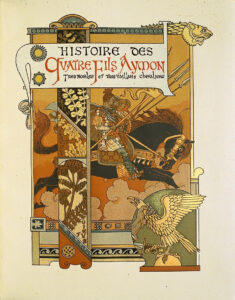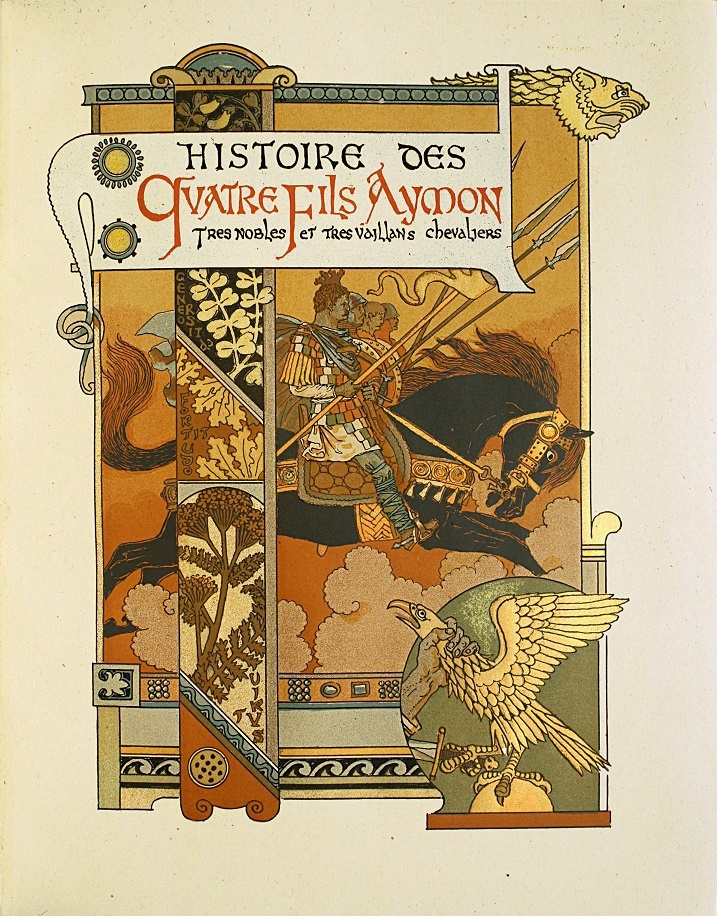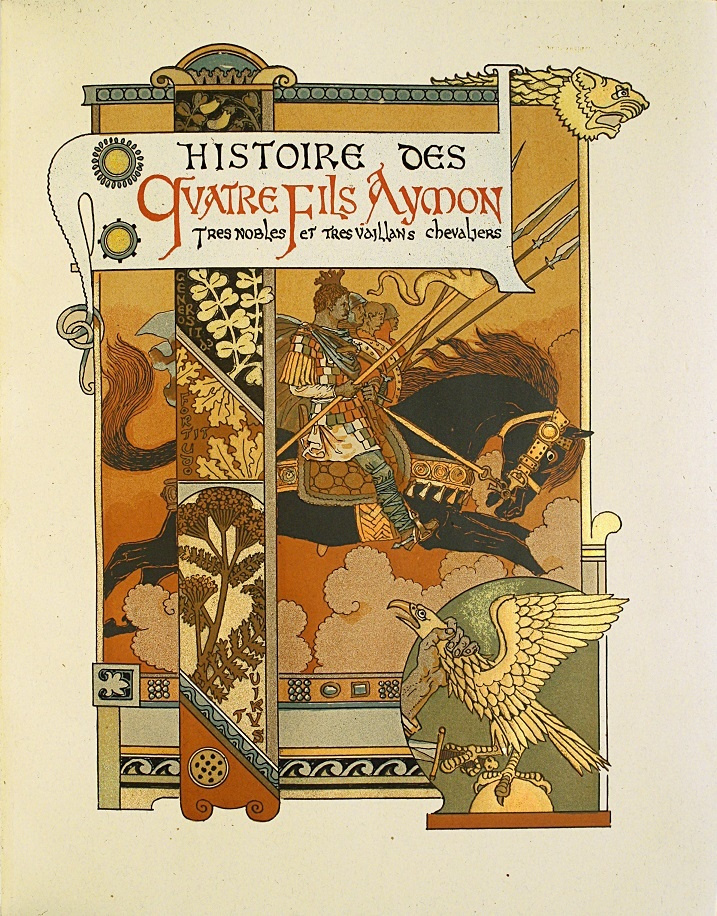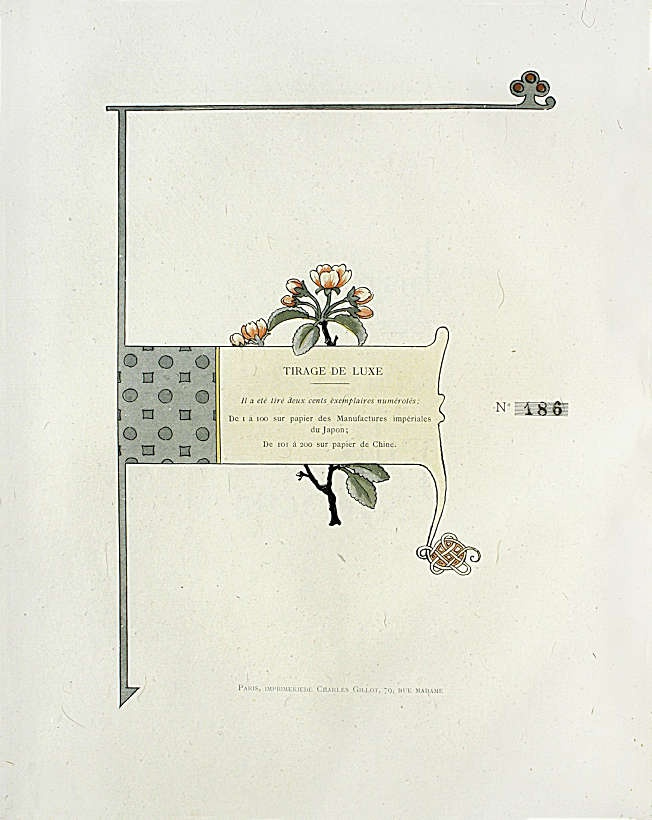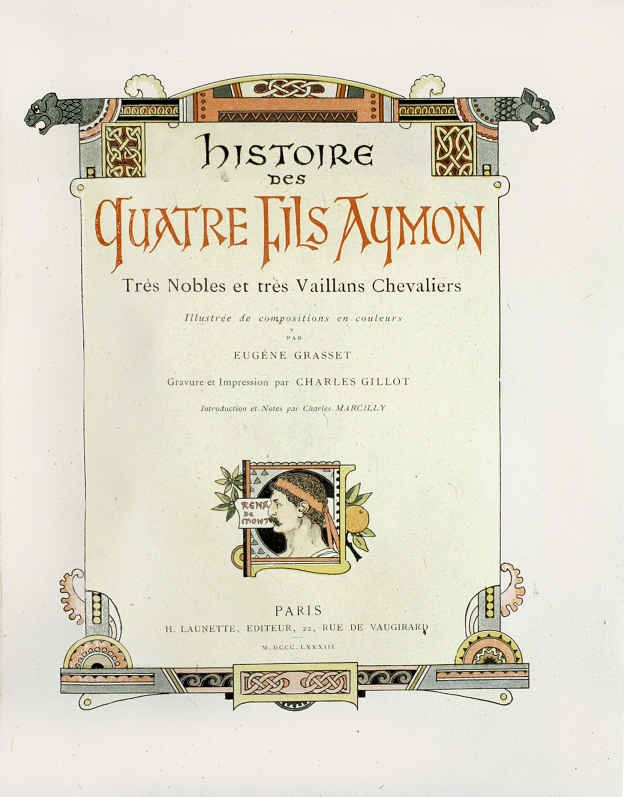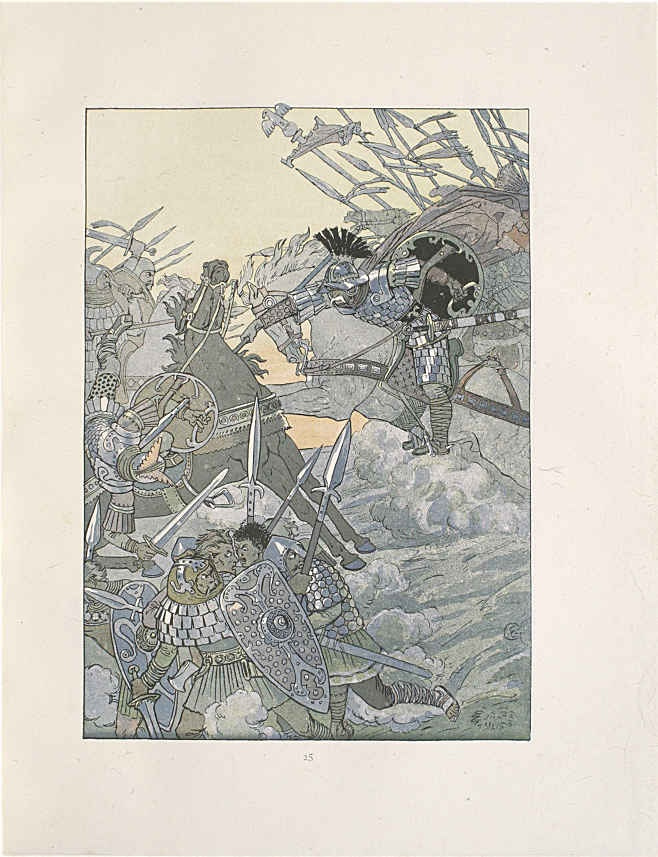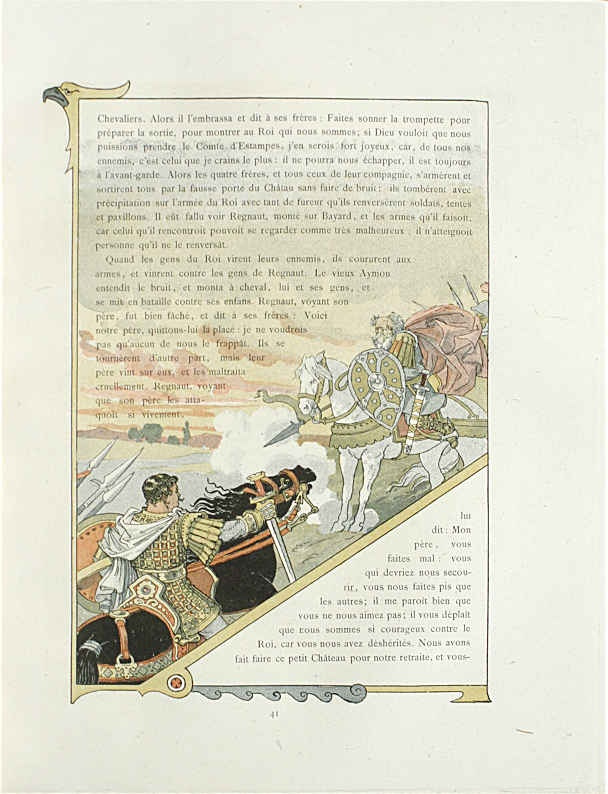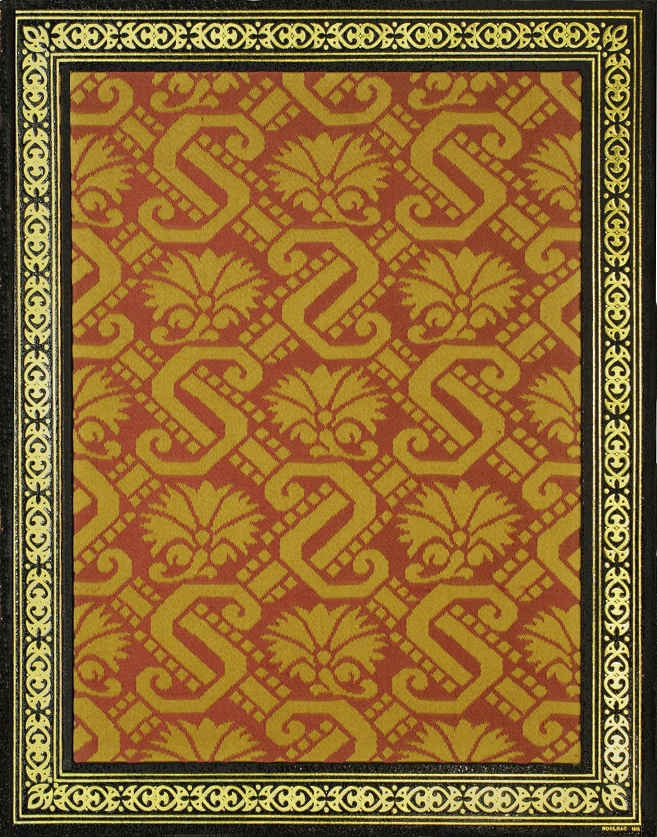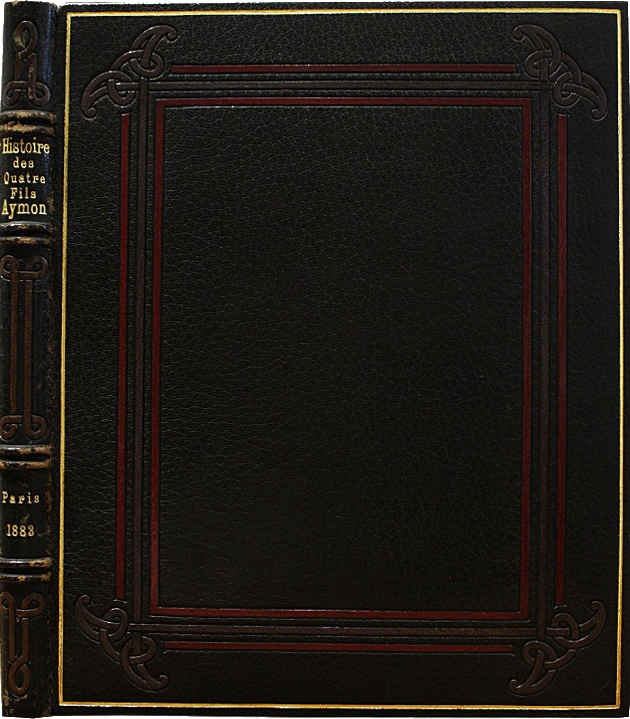Paris, H. Launette, 1883.
Folio [279 x 221 mm] of (4) ll., 224 pp., (8) ll. of notes, table and colophon, 2 full-page colored engravings in the text. Original wrappers and spine bound in.
Bound in full straight-grained black morocco, covers richly decorated with a frame of gilt fillet, double red morocco fillet and aubergine morocco fillet, aubergine morocco feurons at the corners, spine ribbed and decorated, gilt inner border, superb red velvet with gilt patterns doublures, gilt over untrimmed edges. Case. Binding dated and signed Noulhac 1911.
The most beautiful illustrated edition of this text inspired by a Middle Ages legend, illustrated on each page with colored compositions by Eugène Grasset.
Vicaire, IV, p.142.
“Beautiful work, very rare and highly rated, especially on large paper, that left its mark in the history of illustration of modern illustrated book; beginning of the ‘Gillot’ invention, said ‘gillotage’ in colors.
Issue: 100 China paper and 100 Japan paper, and on tinted vellum. Seek preferably a China paper bound in incised leather by Marius Michel.”
Carteret, IV, p.204.
One of 100 deluxe precious copies on China paper numbered from 101 to 200, this one bearing n°186.
“Beautiful book, composed of 246 pages each illustrated with a different composition in colors.”
(Ventes Rahir, Partie 6, 1971).
“Histoire des quatre fils Aymon, though its initial reception was mixed, became a turning point in the history of illustration. As is remarked in its introduction, the legends of which it is composed have been given “the most luxurious form that a book can achieve””. (Ray, The Art of French illustrated book, 357).
The illustration is composed of 246 pages illustrated with colored compositions, in the text, around the text, superimposed, in full-page, by Eugène Grasset, engraved and printed with the gillotage process, invented by Charles Gillot.
Art Nouveau illustration and very sophisticated layout: each leaf is illustrated with frames, ornaments or vignettes in the text, of all sizes where sometimes the background color invades the page… that is around 250 colored compositions and a year-long work to achieve the printing.
“First book illustrated in photogravure and “chromography”, techniques invented by Charles Gillot”. (Monod, 6043).
“The ‘gillotage’, that appeared around 1883, allowed to reproduce drawings, especially composed to be executed with line, monochrome, in typographical colors.
The first published work is the one of Armand Silvestre, le Conte de l’archer, illustrated by Poirson, edited by Lahure in 1883. The same year, Gillot published the important work: Histoire des quatre fils Aymon, illustrated by Grasset. So, these two works were the prototypes in colors of this new process.” Carteret, I, p. 300.
Superb copy preserved in its luxurious morocco binding decorated with mosaic patterns and signed by Noulhac.
